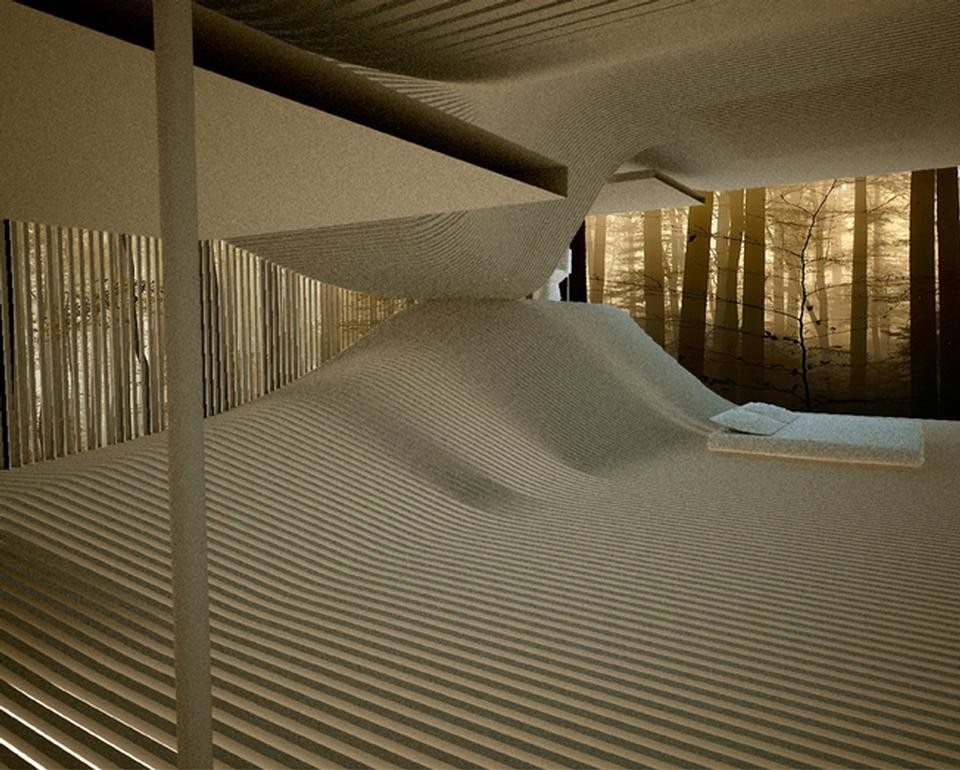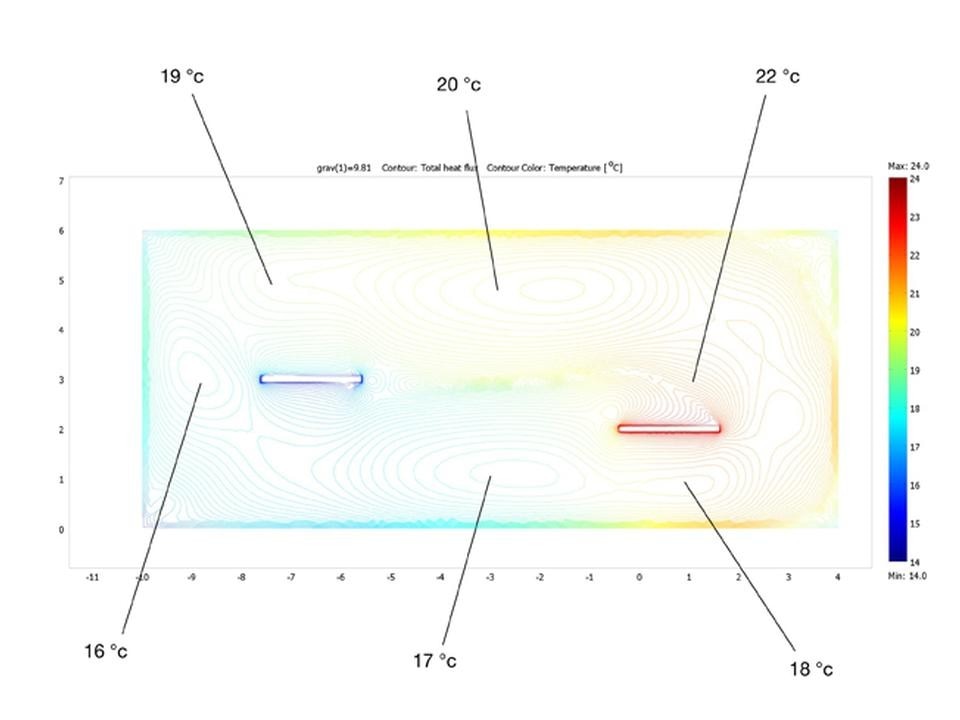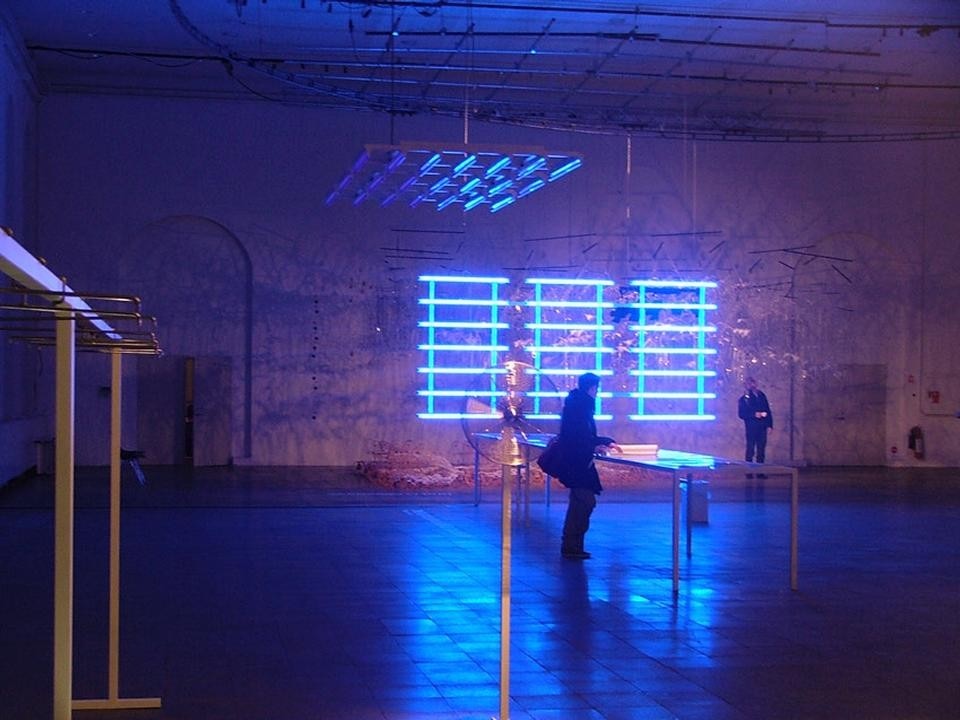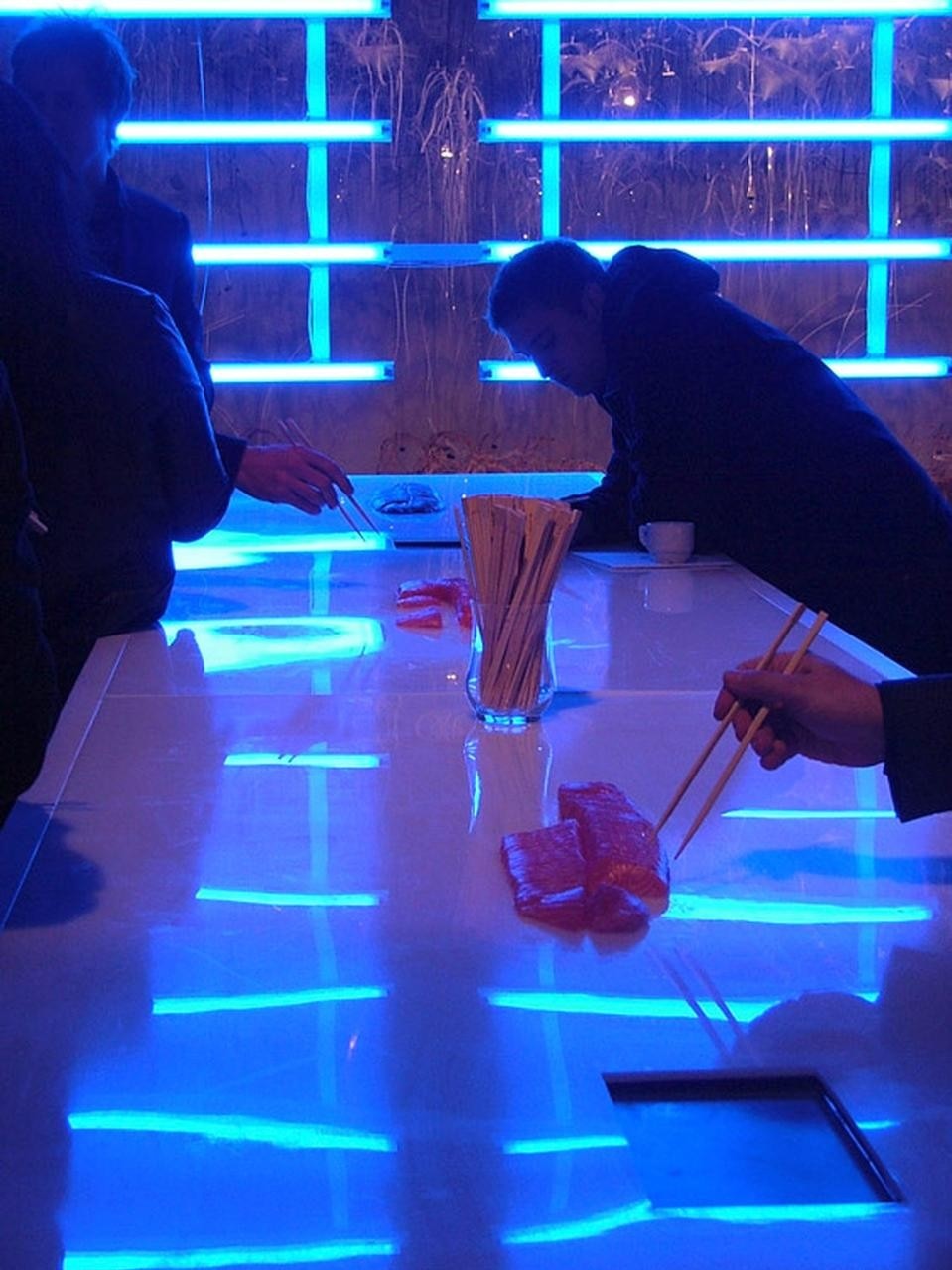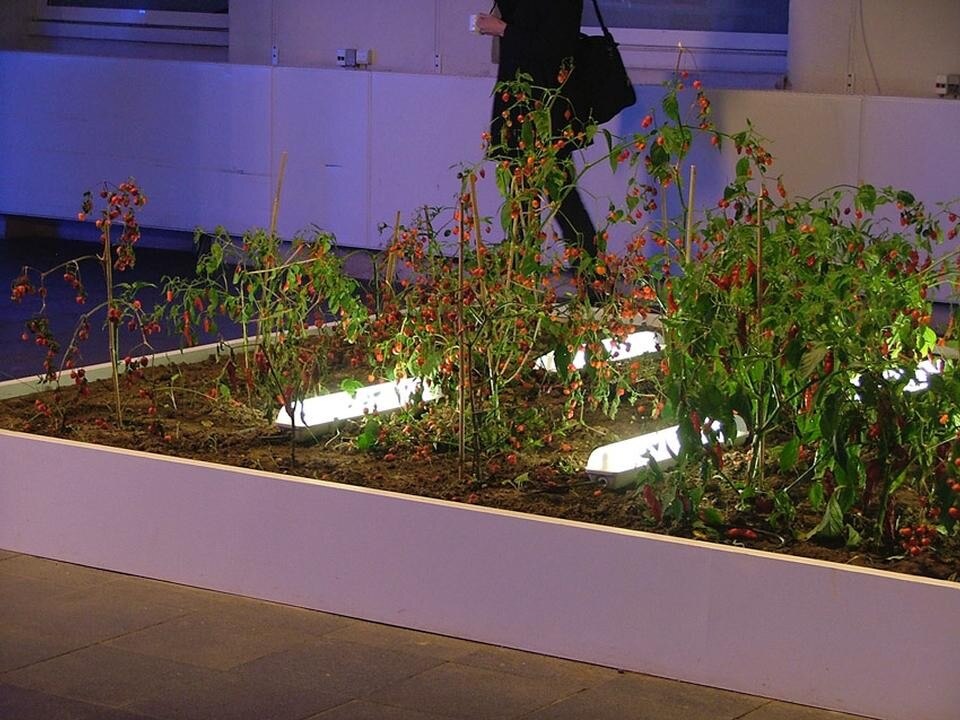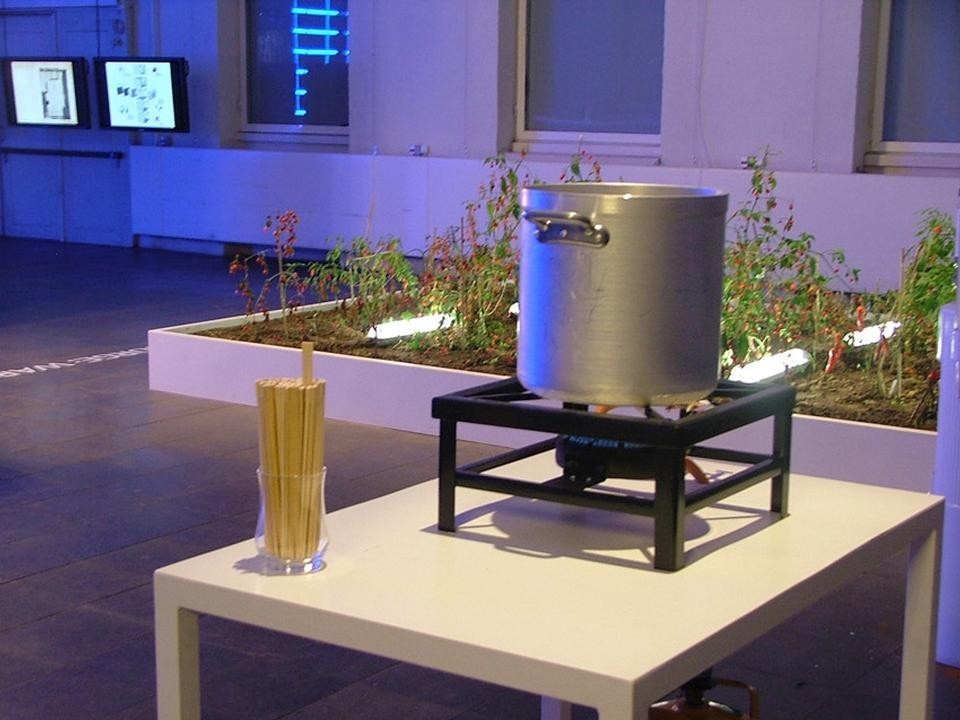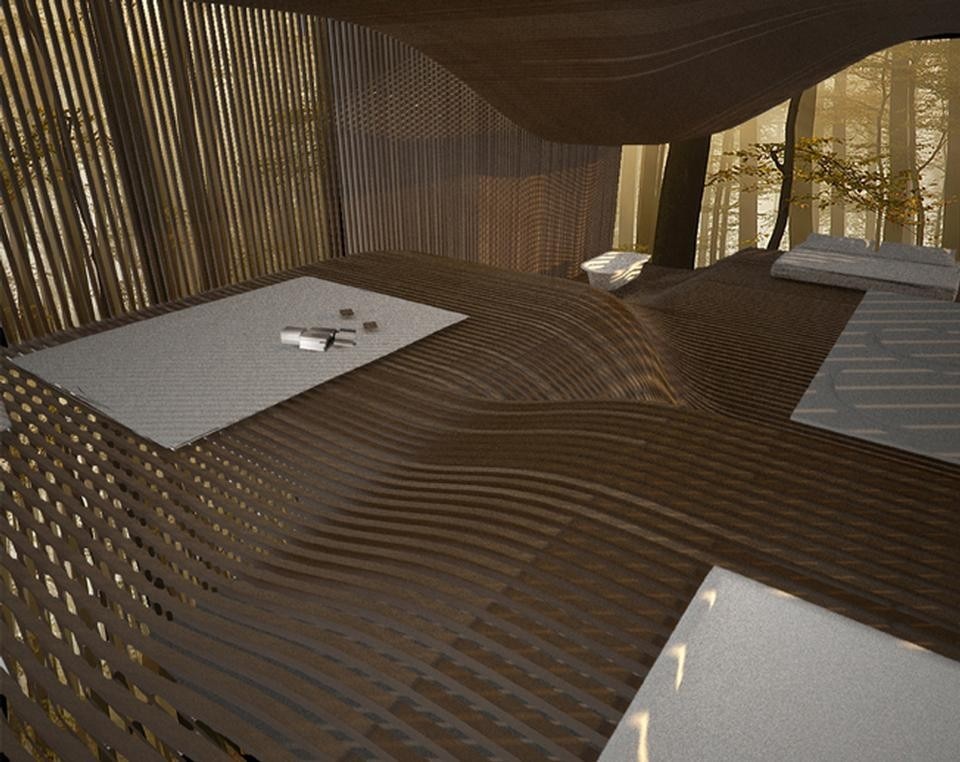We asked him what responsibilities architecture has today in terms of climate change and how it can make a difference in the crucial climate change debate.
Listen to Rahm's response
Rahm went into more depth on various aspects of the exhibition with students at the Royal Danish Academy of Fine Arts. The exhibition title, "The Olduvai Gorges", refers to the area of sub-Saharan Africa that scientific research and theory suggests was the cradle of humanity. As this suggests, it puts human biology centre stage: humans are "programmed" for a 24-hour day/night cycle (closer to those in Africa than in countries like Denmark) and a core temperature of around 37°C, which the body maintains by using thermogenesis to produce heat.
Rahm sees architecture as a phase of thermogenesis. He visualises it in terms of three environments - one that is too dark and needs light, one that is too cold and needs heat, and one that is too hot and needs cold. Fish oil (rich in vitamin D) and ultraviolet light to synthesise the vitamin D in the fish compensate for the lack of light, in the same way in which fans and a culture of chilli and mint are used in a hot country.
Listen to Rahm's description
